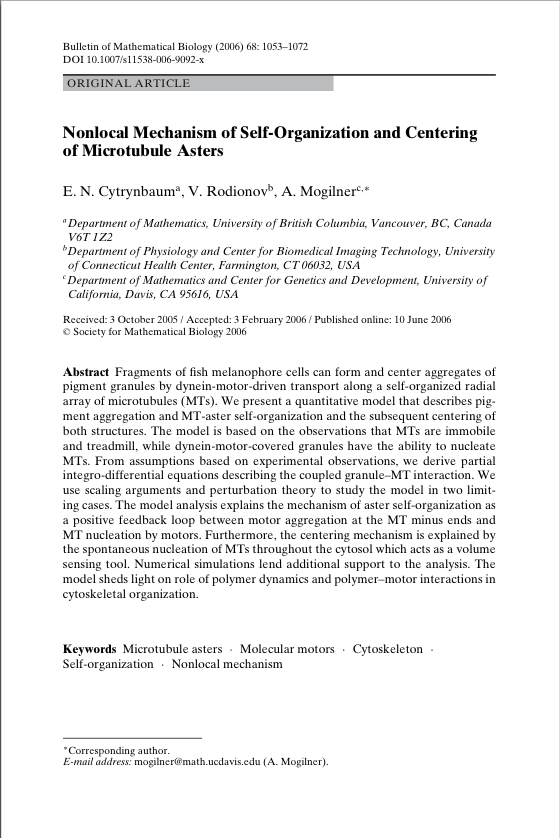Publications
| Abstract | Fragments of fish melanophore cells can form and center aggregates of pigment granules by dynein-motor-driven transport along a self-organized radial array of microtubules (MTs). We present a quantitative model that describes pigment aggregation and MT-aster self-organization and the subsequent centering of both structures. The model is based on the observations that MTs are immobile and treadmill, while dynein-motor-covered granules have the ability to nucleate MTs. From assumptions based on experimental observations, we derive partial integro-differential equations describing the coupled granule-MT interaction. We use scaling arguments and perturbation theory to study the model in two limiting cases. The model analysis explains the mechanism of aster self-organization as a positive feedback loop between motor aggregation at the MT minus ends and MT nucleation by motors. Furthermore, the centering mechanism is explained by the spontaneous nucleation of MTs throughout the cytosol which acts as a volume sensing tool. Numerical simulations lend additional support to the analysis. The model sheds light on role of polymer dynamics and polymer-motor interactions in cytoskeletal organization. |
|---|---|
| A link to the paper |
 Bull Math Biol, 68(5):1053-1072, 2006. |